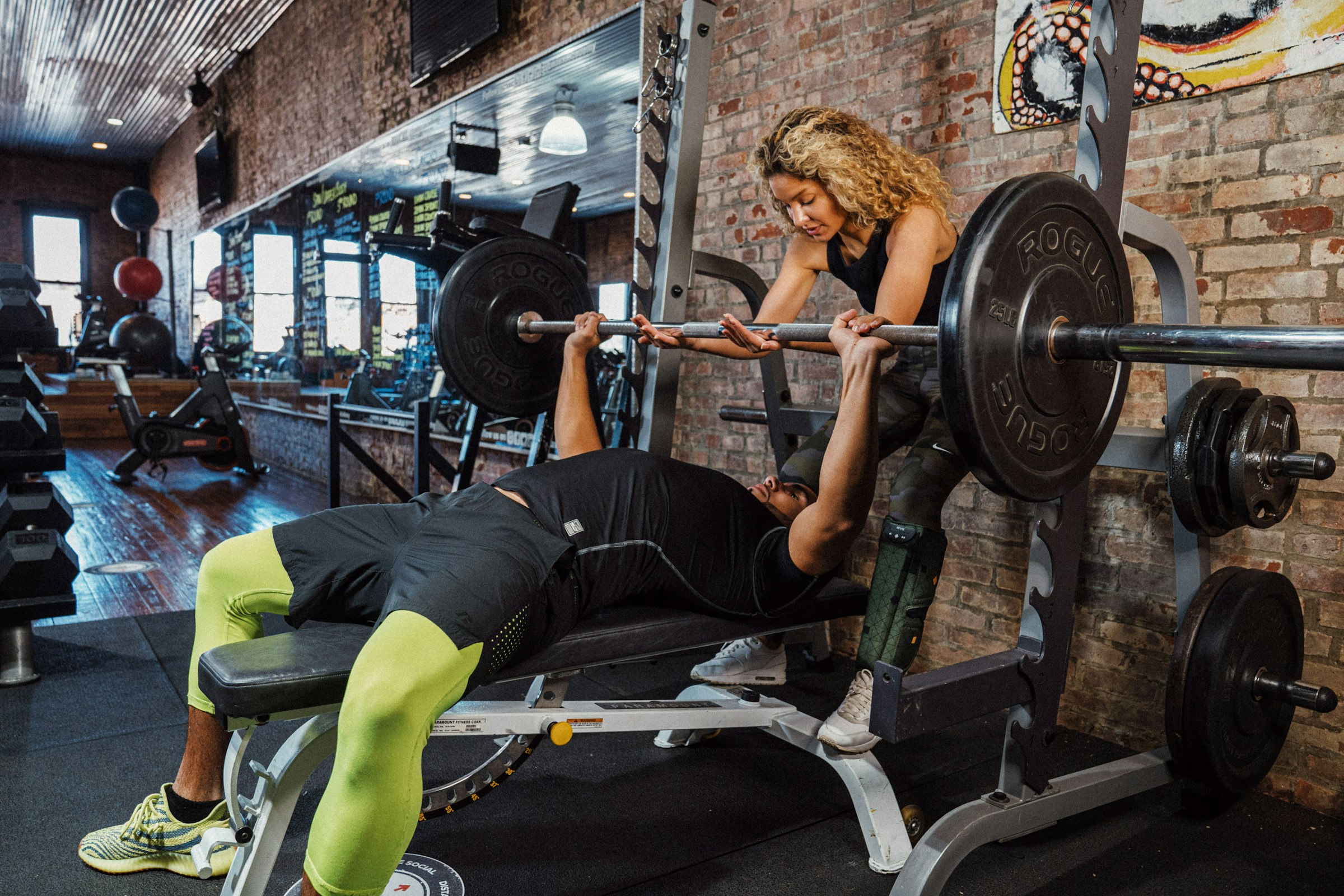Becoming hyper-fixated on using running as a workout is easy. To be clear, there’s nothing wrong with counting a near-daily jog as your No. 1 workout (with a recovery day or two built into your regimen). Running is accessible (no equipment needed) and gets the heart pumping and feel-good endorphins flowing. However, resistance training can fall by the wayside with runners, especially for people training for endurance events like half marathons and marathons. When your whole week leads to a 20-mile run on Sunday, who has the time to log a weight room session?
However, strength training is critical for preventing injuries and maintaining form. While runners who engage in regular resistance training may prioritize the lower body and core for good reasons, a solid upper body workout is—perhaps surprisingly—also crucial for lowering your odds of injury and boosting your performance.
Let’s discuss why and the five upper-body exercises that’ll have you truly hitting your stride.
Why an upper body workout is essential for runners

The reasons for building lower-body and core strength for running are straightforward. The legs clearly carry you; the core is vital to maintaining form. What about the arms, shoulders, and upper back? Building strength in the unheralded upper body may be an overlooked key to unlocking a new PR. Here why. Upper body work can help runners build:
- Momentum and length. A strong arm can swing harder, propelling you forward with each stride and across the finish line.
- Energy efficiency. Pumping the arms transfers energy and puts off fatigued feelings.
- Balance and form. The upper body, including the back and shoulders, are critical parts of your form. Strengthening these muscles wards off poor, injury-inducing form issues, like slouching or leaning too far forward. Poor form also raises the risk of falls (and injuries).
- Endurance. Resistance training can boost cardiovascular and muscular stamina.
In short, building upper body strength will boost your overall fitness and running abilities.
5 fantastic upper body exercises for runners

These five upper body moves require limited equipment — you may not even need to run to the gym for them. However, you will likely notice improvement when you run elsewhere if you consistently do these upper body exercises for runners.
Single-arm curls

This isometric move requires dumbbells and targets the biceps, boosting strength and range of motion.
- Stand with feet shoulder-width apart and a weight in each hand by your sides with the hand facing forward.
- Bend at the elbow to curl the weight in your right hand until you create a 90-degree angle.
- Slowly lower the weight to return to the starting position.
- Repeat on the opposite side.
Bench press

This classic gym move works the chest and arms. While you’ll typically use a barbell, you can swap in dumbbells if you don’t have access to an actual bench. A spotter can ensure safety.
- Lie flat on your back on a bench (or a mat if you are using dumbbells). Place hands on the barbell slightly wider than the shoulders and root feet firmly on the floor.
- Slowly lift the barbell off the rack, maintaining a neutral spine.
- Bend the elbows outward as you gradually lower the weight toward the chest.
- Stop just before the barbell hits the nipples and elbows fall below the bench.
- Press back to the starting position and repeat.
Overhead extensions

Sometimes, we overlook the triceps and prioritize the biceps. However, full-arm strength reduces injury risk. Tricep overhead extensions work the triceps and shoulders, improving running form.
- Hold one dumbbell with both hands and palms facing the ceiling.
- Raise the weight overhead while pulling the belly button into the spine. The arms should be fully extended toward the ceiling.
- Bend at the elbow as you lower the weight behind your head. Refrain from shrugging shoulders to the ear.
- Slowly return to the starting position and repeat.
Reclining chest flies
Chest flies work the chest but also boost the triceps and shoulders, helping you enhance your stride and avoid slouching even as fatigue sets in.
- Lie on a bench with an incline at a 30 to 45-degree angle.
- Raise the dumbbells over the chest with a slight bend in the elbow.
- Lower the dumbbells, creating an arc position. You should look like you’re about to hug a beach ball.
- Return to start and repeat.
Renegade rows

This move brings full-body stability, working the back and shoulders while engaging the core.
- Get into a plank position with your hands on a pair of dumbbells. Ensure that your hands, shoulders, legs, and hips are aligned.
- Engage the core as you bend at the elbow to pull one dumbbell toward the hip. Squeeze the shoulder blades at the top of the movement.
- Lower back to start.
- Switch sides and repeat.
Summary

Running is a fantastic physical activity for your physical and mental health. However, using running as your sole source of exercise has some drawbacks, including higher injury risks and reduced muscle mass from weight loss. Resistance training can lower those risks while building more endurance, strength, and balance skills to help you run longer and faster. Lower body and core strength exercises are obvious choices, but an excellent upper body workout is also essential. Your arms are part of your running stride, helping propel you forward and faster. Upper body training can also boost balance and form, lowering injury odds. Try workouts like renegade rows, chest presses, and curls. Keep good form in mind, and speak with a personal trainer if you want more customized ideas.



